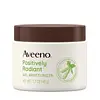What's inside
What's inside
 Key Ingredients
Key Ingredients

 Benefits
Benefits

 Concerns
Concerns

 Ingredients Side-by-side
Ingredients Side-by-side

Water
Skin ConditioningGlycerin
HumectantDimethicone
EmollientGlycine Soja Seed Extract
Skin ConditioningCetearyl Olivate
Dimethicone Crosspolymer
Emulsion StabilisingSorbitan Olivate
EmulsifyingPolyacrylamide
Phenoxyethanol
PreservativeSynthetic Beeswax
Emulsion StabilisingC13-14 Isoparaffin
EmollientDimethiconol
EmollientChlorphenesin
AntimicrobialParfum
MaskingCarbomer
Emulsion StabilisingLaureth-7
EmulsifyingSodium Hyaluronate
HumectantEthylhexylglycerin
Skin ConditioningSodium Hydroxide
BufferingSilica
AbrasiveTitanium Dioxide
Cosmetic ColorantMica
Cosmetic ColorantWater, Glycerin, Dimethicone, Glycine Soja Seed Extract, Cetearyl Olivate, Dimethicone Crosspolymer, Sorbitan Olivate, Polyacrylamide, Phenoxyethanol, Synthetic Beeswax, C13-14 Isoparaffin, Dimethiconol, Chlorphenesin, Parfum, Carbomer, Laureth-7, Sodium Hyaluronate, Ethylhexylglycerin, Sodium Hydroxide, Silica, Titanium Dioxide, Mica
Water
Skin ConditioningGlycerin
HumectantDicaprylyl Ether
EmollientSqualane
EmollientCaprylic/Capric Triglyceride
MaskingCetearyl Olivate
Cetearyl Alcohol
EmollientSorbitan Olivate
EmulsifyingButyrospermum Parkii Butter
Skin ConditioningSaccharide Isomerate
HumectantPyrus Malus Fruit Extract
Skin ConditioningHydroxyethyl Acrylate/Sodium Acryloyldimethyl Taurate Copolymer
Emulsion StabilisingPotassium Sorbate
PreservativeSodium PCA
HumectantAlpha-Ionol
PerfumingBeta-Glucan
Skin ConditioningBiosaccharide Gum-2
Skin ConditioningHydrolyzed Corn Starch
HumectantSodium Stearoyl Glutamate
CleansingBeta Vulgaris Root Extract
Skin ConditioningSodium Levulinate
Skin ConditioningTriticum Vulgare Seed Extract
BufferingCitric Acid
BufferingRosa Moschata Seed Oil
EmollientPolymnia Sonchifolia Root Juice
Skin ConditioningOryza Sativa Bran Extract
Skin ConditioningMaltodextrin
AbsorbentHelianthus Annuus Extract
EmollientSodium Hyaluronate
HumectantTocopherol
AntioxidantRosmarinus Officinalis Leaf Extract
AntimicrobialLactobacillus
Skin ConditioningPolysorbate 60
EmulsifyingSorbitan Isostearate
EmulsifyingLactic Acid
BufferingSodium Citrate
BufferingP-Anisic Acid
MaskingSodium Phytate
Decyl Glucoside
CleansingChamomilla Recutita Flower Extract
MaskingCamellia Sinensis Leaf Extract
AntimicrobialRosa Damascena Extract
MaskingLauryl Glucoside
CleansingHibiscus Rosa-Sinensis Callus Extract
Skin ConditioningCamellia Sinensis Flower Extract
PerfumingCoconut Acid
CleansingSodium Chloride
MaskingSodium Isethionate
CleansingTrisodium Ethylenediamine Disuccinate
Sodium Benzoate
MaskingT-Butyl Alcohol
PerfumingPhenoxyethanol
PreservativeWater, Glycerin, Dicaprylyl Ether, Squalane, Caprylic/Capric Triglyceride, Cetearyl Olivate, Cetearyl Alcohol, Sorbitan Olivate, Butyrospermum Parkii Butter, Saccharide Isomerate, Pyrus Malus Fruit Extract, Hydroxyethyl Acrylate/Sodium Acryloyldimethyl Taurate Copolymer, Potassium Sorbate, Sodium PCA, Alpha-Ionol, Beta-Glucan, Biosaccharide Gum-2, Hydrolyzed Corn Starch, Sodium Stearoyl Glutamate, Beta Vulgaris Root Extract, Sodium Levulinate, Triticum Vulgare Seed Extract, Citric Acid, Rosa Moschata Seed Oil, Polymnia Sonchifolia Root Juice, Oryza Sativa Bran Extract, Maltodextrin, Helianthus Annuus Extract, Sodium Hyaluronate, Tocopherol, Rosmarinus Officinalis Leaf Extract, Lactobacillus, Polysorbate 60, Sorbitan Isostearate, Lactic Acid, Sodium Citrate, P-Anisic Acid, Sodium Phytate, Decyl Glucoside, Chamomilla Recutita Flower Extract, Camellia Sinensis Leaf Extract, Rosa Damascena Extract, Lauryl Glucoside, Hibiscus Rosa-Sinensis Callus Extract, Camellia Sinensis Flower Extract, Coconut Acid, Sodium Chloride, Sodium Isethionate, Trisodium Ethylenediamine Disuccinate, Sodium Benzoate, T-Butyl Alcohol, Phenoxyethanol
Ingredients Explained
These ingredients are found in both products.
Ingredients higher up in an ingredient list are typically present in a larger amount.
Cetearyl Olivate is an emulsifier and texture enhancer. It is derived from the fatty acids of olive oil and Cetearyl alcohol, and is biodegradable.
As an emulsifier, it is used to prevent oils and waters from separating. It can also
Manufacturers use the name Olivem 1000. This ingredient has been found to preserve the natural microbiome of skin. Having a healthy microbiome helps keep our skin healthy and protects against harmful bacteria. This ingredient is grouped with Sorbitan Olivate under the name Olivem 1000.
Learn more about Cetearyl OlivateGlycerin is already naturally found in your skin. It helps moisturize and protect your skin.
A study from 2016 found glycerin to be more effective as a humectant than AHAs and hyaluronic acid.
As a humectant, it helps the skin stay hydrated by pulling moisture to your skin. The low molecular weight of glycerin allows it to pull moisture into the deeper layers of your skin.
Hydrated skin improves your skin barrier; Your skin barrier helps protect against irritants and bacteria.
Glycerin has also been found to have antimicrobial and antiviral properties. Due to these properties, glycerin is often used in wound and burn treatments.
In cosmetics, glycerin is usually derived from plants such as soybean or palm. However, it can also be sourced from animals, such as tallow or animal fat.
This ingredient is organic, colorless, odorless, and non-toxic.
Glycerin is the name for this ingredient in American English. British English uses Glycerol/Glycerine.
Learn more about GlycerinPhenoxyethanol is a preservative that has germicide, antimicrobial, and aromatic properties. Studies show that phenoxyethanol can prevent microbial growth. By itself, it has a scent that is similar to that of a rose.
It's often used in formulations along with Caprylyl Glycol to preserve the shelf life of products.
Sodium Hyaluronate is hyaluronic acid's salt form. It is commonly derived from the sodium salt of hyaluronic acid.
Like hyaluronic acid, it is great at holding water and acts as a humectant. This makes it a great skin hydrating ingredient.
Sodium Hyaluronate is naturally occurring in our bodies and is mostly found in eye fluid and joints.
These are some other common types of Hyaluronic Acid:
Learn more about Sodium HyaluronateSorbitan Olivate is created from the fatty acids in olive oil and sorbitol.
This ingredient is an oil in water emulsifier. It helps stabilize a product by preventing oils and waters from separating. Sorbitan Olivate also helps hydrate the skin.
Manufacturers sell sorbitan olivate under the name OliveM 1000. OliveM 1000 a multifunctional ingredient. It is self-emulsifying. According to a manufacturer, OliveM 1000 does not disrupt natural skin biome.
Due to its olive oil base, this ingredient may not be fungal-acne safe.
Learn more about Sorbitan OlivateWater. It's the most common cosmetic ingredient of all. You'll usually see it at the top of ingredient lists, meaning that it makes up the largest part of the product.
So why is it so popular? Water most often acts as a solvent - this means that it helps dissolve other ingredients into the formulation.
You'll also recognize water as that liquid we all need to stay alive. If you see this, drink a glass of water. Stay hydrated!
Learn more about Water